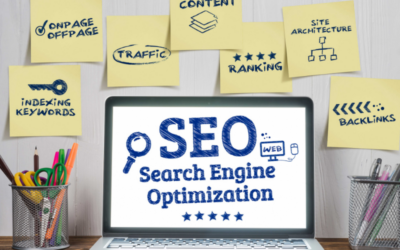Your website is more than just an online brochure—it’s a dynamic platform where casual visitors can be transformed into loyal customers. At its core, website optimization is about fine-tuning every element of your site to boost performance, enhance user experience, and ultimately drive conversions. In this blog, we explore how analyzing site performance and optimizing user experience can elevate your digital presence.
Understanding Website Optimization
Website optimization involves a comprehensive approach to improve your website’s speed, functionality, and overall user experience. This process includes:
-
Performance Analysis: Measuring load times, uptime, and server response.
-
User Experience (UX): Ensuring intuitive navigation, engaging design, and mobile responsiveness.
-
Content Optimization: Creating compelling, SEO-friendly content that resonates with your audience.
-
Conversion Rate Optimization (CRO): Streamlining the customer journey to encourage actions like sign-ups, purchases, or inquiries.
By focusing on these areas, businesses can ensure that every aspect of their website works together seamlessly to convert visitors into loyal advocates.
Analyzing Your Site’s Performance
Performance is the foundation of any successful website. A site that loads slowly or suffers from frequent downtime not only frustrates visitors but also risks losing potential customers. Here’s how to keep your site performing at its best:
1. Speed Optimization
-
Fast Loading Times: Use tools like Google PageSpeed Insights or GTmetrix to measure your site’s speed and identify bottlenecks.
-
Optimized Images: Compress images without sacrificing quality to reduce loading times.
-
Efficient Code: Minimize CSS, JavaScript, and HTML to streamline your website’s performance.
2. Reliability and Uptime
-
Robust Hosting: Choose a reliable hosting provider that guarantees high uptime.
-
Regular Monitoring: Utilize performance monitoring tools to detect and resolve issues before they impact your visitors.
3. Mobile Responsiveness
-
Adaptive Design: Ensure your website is optimized for various screen sizes and devices.
-
User-Friendly Navigation: Simplify menus and interactive elements for easy navigation on mobile devices.
A high-performing website not only improves user satisfaction but also positively influences search engine rankings, drawing more organic traffic to your site.
Enhancing User Experience (UX)
User experience is central to turning casual visitors into loyal customers. By focusing on intuitive design and engaging content, you can create an environment where users feel valued and motivated to take action.
1. Intuitive Navigation
-
Clear Layouts: Design your site with a clean structure that helps visitors find what they need quickly.
-
Consistent Branding: Maintain a consistent look and feel throughout your site to reinforce trust and familiarity.
2. Engaging Content
-
Quality Over Quantity: Prioritize high-quality, informative content that addresses your audience’s needs and interests.
-
Interactive Elements: Incorporate videos, infographics, and interactive forms to keep visitors engaged.
3. Personalized Experiences
-
User Data Analysis: Use analytics to understand visitor behavior and tailor experiences to individual preferences.
-
A/B Testing: Experiment with different layouts, CTAs, and content to determine what resonates best with your audience.
4. Accessibility
-
Inclusive Design: Ensure your website is accessible to all users, including those with disabilities.
-
Compliance Standards: Follow best practices and legal guidelines for accessibility, such as the Web Content Accessibility Guidelines (WCAG).
By refining these elements, you can create a website that not only looks great but also delivers a frictionless and engaging user experience.
Transforming Visitors into Loyal Customers
When website optimization is executed effectively, the benefits extend beyond improved metrics—they pave the way for deeper customer relationships. Here are some strategies to convert your optimized website traffic into loyal customers:
Trust Building
-
Transparent Communication: Offer clear information about your products, services, and business values.
-
Customer Reviews and Testimonials: Display feedback prominently to build social proof and credibility.
Enhanced Engagement
-
Email Marketing Integration: Capture visitor information to nurture leads through targeted email campaigns.
-
Interactive Chat Support: Provide real-time assistance to help visitors overcome any hurdles during their browsing experience.
Retargeting Strategies
-
Personalized Offers: Use visitor data to create tailored offers and discounts that encourage repeat visits.
-
Remarketing Campaigns: Engage previous visitors with relevant ads that remind them of what they’re missing.
Ongoing Optimization
-
Regular Updates: Continuously monitor performance and UX metrics, and be ready to make iterative improvements.
-
Feedback Loops: Encourage visitors to share their experiences and suggestions, helping you further refine the site.
Conclusion
Website optimization is not a one-time task—it’s an ongoing process of analyzing, testing, and refining every aspect of your digital presence. By focusing on performance and user experience, you can create a website that not only attracts casual visitors but also transforms them into loyal, long-term customers.
Invest in the optimization journey today, and watch as your website becomes a powerful tool in driving business growth and customer loyalty.



